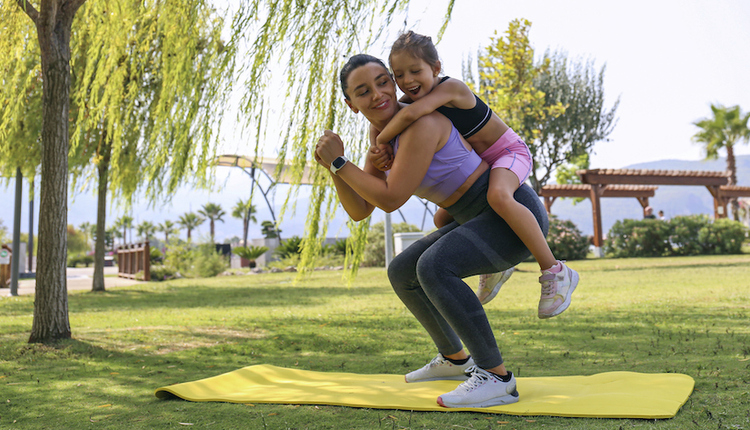One of the more recent evolutions in the industry has been the creation of a new niche servicing a demographic that is not only a must for club owners to take note of, but it also represents a potential for ongoing revenue that will lead to long-term retention: the youth sports conditioning client. Planning on creating your own program for this niche? Then consider these critical factors:
Staffing and Staff Training
Children are not miniature adults. The training needs of youths aged six to 18 not only vary within that age spectrum itself but also from adult populations at large. While this may seem like one of those “doesn’t need to be said†realities, I have been and continue to be incredibly shocked and amazed at how many youth sports performance initiatives I see that do not keep this specific issue in mind. And quite frankly, that may be because very few have formal education or training with respect to pediatric exercise science.
The main issue to understand with respect to pediatric and adolescent sports training is teach more than train. Youth-centered sports training must be considered developmental in nature, in which skills are taught, mastered over time and then built upon in a pyramid-like fashion. Your program and the education of your staff should be based on making every training session one of skill acquisition through the careful and systematic teaching of movement such as running, skipping, force production/absorption, body positioning and lift mechanics.
Training sessions should not be about making the kids sweat; any training can make a young athlete tired, but it takes a truly knowledgeable professional to make them better.
It is imperative that your staff be educated and trained in the sciences and art associated with youth sports performance training. Don’t glance over this one -- it could make or break how effective and profitable your program eventually becomes.
Program Design and Development
One of the primary mistakes we have made forever in this industry is giving our clients the luxury of using our services only when they feel like it at virtually no penalty to them whatsoever. Personal training has long been a system in which clients can sign up with an individual trainer and receive service over a rather short-term timeframe. Most packages are sold by the session; the long-term ones typically being 25 sessions in length.
As I already cited above, the needs of youths in terms of sport performance must be looked upon as developmental, systematic and gradual in nature, so it is critical for club owners to establish a different kind of service package for this younger demographic. I have found that six- or 12-month memberships work best from both client satisfaction and optimal revenue perspectives.
In terms of development or implementation, consider these longer-term packages as you would involvement in any type of martial arts school; there is a simple monthly fee and specific class schedule. Clients and their parents work it out within their own schedules as to how many times per week they can attend and to which classes fit best for them.
Logistically, I suggest that you break your youth sports performance program up into three or four separate age categories and establish a class schedule in which each age classification is represented at varying times throughout the week. The age breakdown also affords the opportunity foryour trainers to be working with participants who all require the same kind of conditioning stimulus, which is largely determined by age.
Rather than worrying about cancellations, payment tracking or selling clients on purchasing the next package once the one they are on expires, you simply sign them up at the beginning for six or 12 months, charge them a rate of “X†number of dollars per month and present them a schedule outlining when their children can come in for training based on how old they are. From there, they decide when and how often they will make a visit.
In this system, the fee per session is reduced (a very good thing in terms of client retention), but the difference is made up in volume. For example, one client may pay $50 per hour and use training services once per week. In my model, you may have as many as eight to 15 kids of comparable age training within the same class, each paying a membership fee of $150 per month and coming to class once per week.
In these scenarios, the per session service amounts to $200 each month in revenue. In my model, the monthly revenue would be between $1,200 to $2,250.
Marketing to a Specific Demographic
Marketing and advertising to this demographic is vastly different than with adults and can be summarized in one sentence: You must go to where the kids are.
Your current adult membership base represents your largest potential in terms of starting and maintaining a youth sports conditioning program. Many of them have kids, the vast majority of which likely participate in sports. In order to alert them to your new program and get them committed to getting their kids involved, here are some suggestions:
- Post signs to being the process of notification.
- Have your front staff begin to chat with members and ask if they are interested.
- Hold live workshops in areas that your members can see.
- Send direct mail to your members.
- Offer free, two-week trials.
- Host a community event within your club to discuss the concerns and solutions of ACL injuries in youth sports or other hot topics that will draw attention from parents of young athletes.
The youth industry is the fastest-growing and one of the most lucrative portions of the entire fitness field. It is a must for you to consider adding a youth sports conditioning program to your current club!
5 Places to Find Sports Conditioning Clients
- Your personal network -- There’s no better place to start looking for prospective sports conditioning clients that within your own personal network. Some members of your network undoubtedly have kids, while others may have in-roads into youth sports leagues, schools and any number of other groups that already serve the market you’re trying to reach.
- Youth sports leagues -- Some youth leagues enroll thousands of kids. Find ways to affiliate with local youth sports leagues, either though paid sponsorships or by offering clinics or camps to their members.
- Local schools -- Many schools will allow you to send flyers home with students, while others might even allow you to offer after-school programs on school grounds. Approach the schools in your community to see what options are available to you.
- Youth organizations -- Church-affiliated groups, Boys & Girls clubs, scouting groups and various other youth organizations are all great places to start building relationships with kids and parents.
- Local businesses -- Sporting goods stores, professional tutoring businesses and orthopedic physicians are just a few of the local businesses that you can try to form alliances with to start serving the youth market.
Brian Grasso is the Founder and CEO of the International Youth Conditioning Association (IYCA). Become a certified Youth Fitness Specialist or learn about the specific aspects of training children, youths and teens for free by visiting www.iyca.org.
















